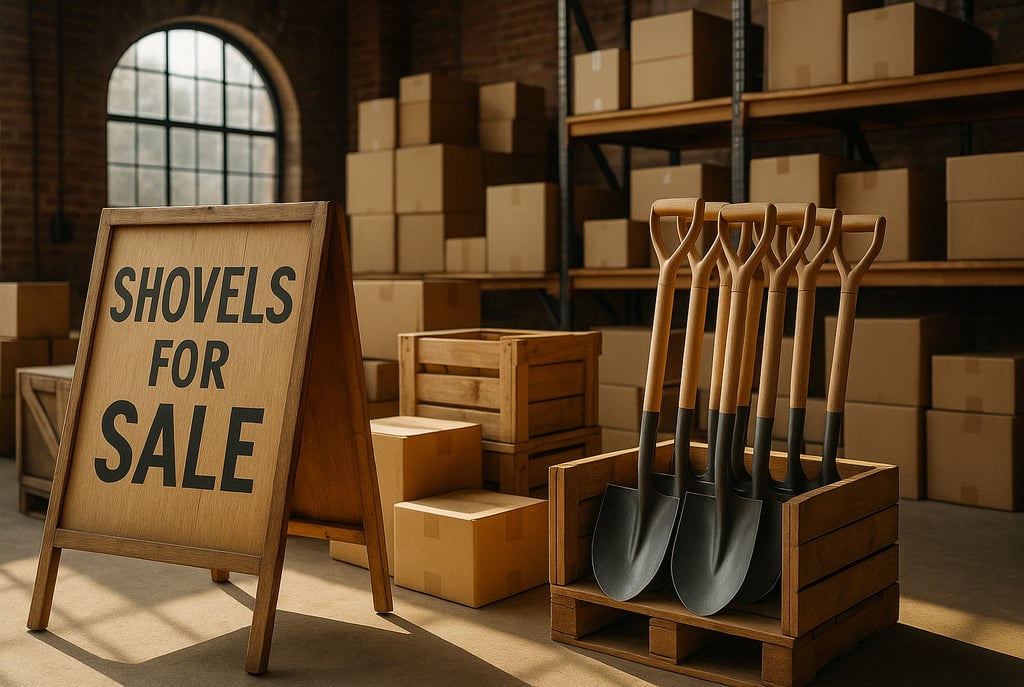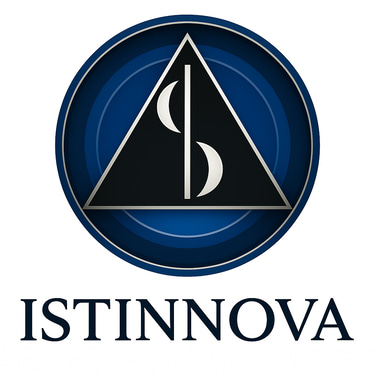The Shovel-Seller’s Secret: How to Build a Lasting Business
Even if You’re Not Digging for Gold
Ileana Scemtovici
9/29/20253 min read


Beyond the Glamour, Where Longevity Lives
Let’s be honest, there’s something intoxicating about the gold-digger narrative.
The founder who strikes it rich.
The creator who goes viral.
The startup that raises millions overnight.
We’re drawn to those stories because they feed our belief in the big win, the leapfrog, the dramatic arc.
But behind the noise, there's a quieter path. One built not on hype, but on infrastructure. Not on bets, but on design. One that often outlasts the gold rush itself.
That’s the path of the shovel-seller.
While gold-diggers chase the prize, shovel-sellers serve the process. And in doing so, they build something far more enduring: platforms, systems, tools, and networks that everyone else needs.
This article is about how to do that well.
The Long Game of the Shovel-seller
Building a shovel business is not about chasing headlines. It’s about constructing a machine that can withstand time, trends, and competition. The key? Building a foundation that doesn’t crack when the market shifts.
1.1 Infrastructure First
The most successful shovel-sellers aren’t glamorous. They’re invisible. Their tools just work. Think Stripe. AWS. FedEx. The roads and rails of commerce. You don’t see them unless they fail—and that’s the point. In this world, reliability is value.
This means prioritizing:
System resilience over experimental flair
Operational excellence over rapid pivots
Customer uptime over internal speed
1.2 Scalability by Design
The magic of a shovel-seller business isn’t that it serves one gold-digger well, it’s that it can serve thousands, consistently. Your architecture, processes, and people need to scale without losing the quality that built your reputation.
Ask: If demand tripled next month, would your systems bend or break?
1.3 Timeless Examples
Shovel-sellers aren’t new. They’ve been with us since the start of capitalism.
19th-century Levi Strauss sold durable clothing to miners. He’s still around.
IBM moved from tabulating machines to cloud-based enterprise services.
UPS and DHL turned global logistics into a reliable, repeatable business backbone.
Shopify powers millions of entrepreneurs—not by selling products, but by building their tools.
These businesses endure not because they chase gold, but because they understand the flow of value, and position themselves as its enablers.
Strategic Thinking for Shovel-sellers
You don’t win the shovel game by being average. You win by being indispensable.
2.1 Avoiding Commoditization
Here’s the risk: once everyone sells shovels, how do you stand out?
You specialize. You innovate. You brand.
Think of how Notion turned note-taking into a design-forward productivity platform. Or how Figma built a collaborative layer that no one knew they needed, until they did. These brands didn’t just offer a tool. They built an identity around usability, elegance, and community.
2.2 Customer Loyalty Is Strategic Moat
Gold-diggers chase momentum. Shovel-sellers cultivate relationships. And in a world of SaaS churn and rising CAC, customer loyalty is your best hedge.
Invest in:
Intuitive onboarding
Predictable support
Clear documentation and resources
Community-led feedback loops
Loyalty doesn’t come from discounts. It comes from reliability. When your customers trust you to keep their business running, they don’t price-shop—they renew.
2.3 Build (or Join) Ecosystems
No one wins alone. The strongest shovel businesses embed themselves into networks of value.
This could mean:
Strategic integrations (APIs, plug-ins, open standards)
Affiliate or partner programs
Industry alliances or data-sharing coalitions
Think less “tool” and more “platform.” If others build on top of you, your stickiness skyrockets.
Leadership in the Shovel Business
This isn’t just an operational play, it’s a leadership mindset.
3.1 Lead Like a System Architect
You’re not chasing glory. You’re designing resilience. That means:
Thinking in second-order effects
Building for edge cases, not just MVPs
Investing in process documentation, automation, and fail-safes
A great shovel-seller doesn’t just think about the next quarter, they think about the next thousand users.
3.2 Culture of Reliability
In fast-moving markets, culture often skews toward speed. But for shovel-sellers, reliability is your brand.
Create a company culture where:
Internal service is as valued as external delivery
Operational debt is surfaced, not buried
Teams own uptime, not just launch cycles
When your people become known for being reliable, your product follows.
3.3 Stay Restless, Even When Stable
Here’s the paradox: the more reliable you become, the more tempting it is to stop evolving.
That’s fatal.
The best shovel-sellers continuously reinvest in their own future:
R&D for internal tools
Product refreshes that anticipate, not just react to, user needs
Acquisitions or experiments that explore the edge of your ecosystem
In short, never confuse consistency with complacency.
The Hidden Reward in Shovels
Shovel-selling isn’t glamorous. You’re not in the spotlight. You’re not chasing the next big thing. But you are building the thing that others depend on to chase theirs.
And that’s where the real power lies.
Stability. Longevity. Strategic leverage.
It doesn’t always make headlines, but it builds businesses that last decades, not cycles.
So if you’re building something today, ask yourself:
Are you chasing hype, or designing for endurance?
Are you fixated on attention, or focused on enabling others at scale?
Because when the gold rush dust settles, the businesses still standing aren’t always the flashiest.
They’re the ones who sold the tools, fueled the builders, and kept showing up.
That’s the shovel-seller’s secret.
Innovation
Empowering industries with cutting-edge solutions and expertise.
© 2024. All rights reserved.
privacy
TERMS
cookies
Istinnova Business Advisory, Strategy & Transformation. Innovating with Intelligence. Leading with Clarity.
